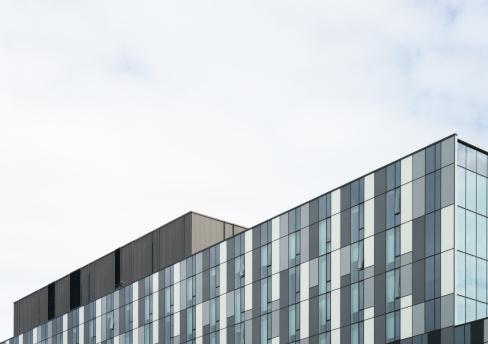
University campuses in the UK are currently deserted when they would normally be bustling with energy and enthusiasm. Student accommodation blocks are not empty, but they are around half full at the moment as many students endure lockdown back at home with their families. The purpose built student accommodation (PBSA) market relies on relatively high occupancy rates to generate the expected returns. So how is this market faring now, and what can we expect in the near future?
Commercial real estate cycles have historically tracked general economic cycles, with 2008-2010, and the hesitant recoveries that followed, being a good example. One of the exceptions to that is the PBSA market which has traditionally been seen a more defensive, counter-cyclical asset class. One of the reasons for this is the view that during a recession more people will look to re-train.
What we are dealing with here, however, is something significantly wider than an economic downturn. This crisis is so far-reaching, so all-consuming, that it seems inevitable that there will be very few corners of the commercial real estate market left unscathed.
What the future holds for the economy generally, and commercial real estate in particular, let alone any given asset class, depends heavily on three inter-related factors: the length of time we remain in lockdown, what the precautionary measures look like as lockdown is eased, and what the economic recovery looks like.
Frankly, nobody could have predicted with any accuracy the global events of 2020 as they unfolded, and only the very brave or very foolish would try to predict with any degree of certainty what lies ahead. There are some themes, however, that may hold true for the PBSA market in the UK and which are worthy of tentatively tip-toeing through. So, off we go with bravery and foolishness in equal measure.
First off, it seems likely that all universities across the world are going to see a drop in the number of international students. That is almost certainly true for the academic year 20/21, and the UK is likely to see a double hit on international student numbers as Brexit takes effect. International student numbers will in all likelihood be down in 21/22 as well. Indeed it is not out of the question that this trend becomes permanent, but that depends on a whole host of external factors, not least the cost and ease of travel in the future, and also whether or not a vaccine is found or whether we end up living with coronavirus indefinitely.
The expectation is that domestic demand will pick up some but not all of the slack in UK university places. It seems unlikely, however, that domestic students will be able to compensate for a similar proportion of the slack in the UK PBSA market. Part of the reason for this is because domestic students may be more likely to live at home while studying. The main reason, however, is likely to be affordability. PBSA rents are generally speaking aimed at the higher end of the market, where the demographic is heavily international. Added into the mix for 20/21 is the inability to complete the high school exam programme, so the usual "clearing" process for those awaiting grade will not apply to domestic students. Since university place offers are usually oversubscribed (with the universities expecting some who get an offer to fail to meet the required grades) we may actually see a surplus of domestic students in 20/21 as universities seek to avoid the bad press of refusing to take on students who meet the grade requirements. So, 20/21 might be a year of international slack picked up by domestic demand, albeit against tighter margins as affordability issues kick in.
This is likely to result in the continuation of a trend that we have been aware of in the PBSA market across the world for some time now. The higher end of the market is relatively well served by PBSAs. The opportunity (for developers and operators at least) has been in the mid-market rent space. Taking advantage of that opportunity has proved easier said than done, mainly because construction costs are relatively fixed whether you are building a high end PBSA or a "lower end" scheme. Looking to the future, it is difficult to see construction costs doing anything other than increasing. Social distancing on construction sites once the lockdown is eased, difficulties with the supply chain, lack of materials are all going to result in higher development costs in the near future, making it even harder for anyone to tap into the area of the market where demand currently outstrips supply.
Another interesting feature of the coronavirus pandemic is how that will affect room / layout preferences in PBSAs. In countries like Germany the preference has always been for studio flats, whereas in Spain for example cluster flats have been far more popular. In the UK the PBSA schemes have tended to comprise a mix of both, but going forward it seems likely that students are going to prefer studios, simply to make social distancing easier. That preference might affect the design of future developments, and it might even result in the reconfiguration of existing schemes. Again, much depends on whether or not, and how quickly, a vaccine can be developed.
In terms of occupancy rates, the general view seems to be that most places (unless completely reliant on international students) will probably see a 10-30% drop in numbers for 20/21, but that is expected to revert to current occupancy levels in 21/22. By all accounts bookings for 20/21 are on a par or ahead of the same time in the current year. So although income will take a hit for the coming academic year, the figures are expected to normalise in 21/22.
Some words of caution though. Landlords are likely to take a softer approach to cancellations, so strong advance bookings may not develop into strong occupancy figures. It is also easy to see that there may be more flex to lease terms (for example to allow shorter lease terms and more flexible payment plans). And social distancing rules are likely to see a rise in operational costs across the board.
One trend that will probably continue to apply is that those PBSAs around the more attractive and successful universities will probably fare best. Occupancy rates are key, and so those cities which are home to the universities that continue to attract the most students, particularly those paying higher tuition fees, will have the most successful PBSA schemes. It will therefore continue to be about the attractiveness of specific universities, rather than countries. For investors willing to overlook some short term turmoil (and there is a lot of money looking for a home at the moment) all this may make a medium to long term play look like a very attractive bet.
The content of this webpage is for information only and is not intended to be construed as legal advice and should not be treated as a substitute for specific advice. Morton Fraser LLP accepts no responsibility for the content of any third party website to which this webpage refers. Morton Fraser LLP is authorised and regulated by the Financial Conduct Authority.









